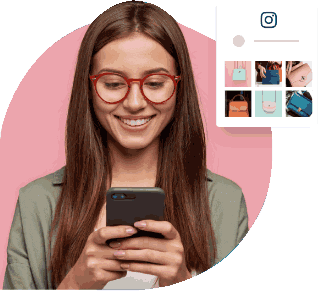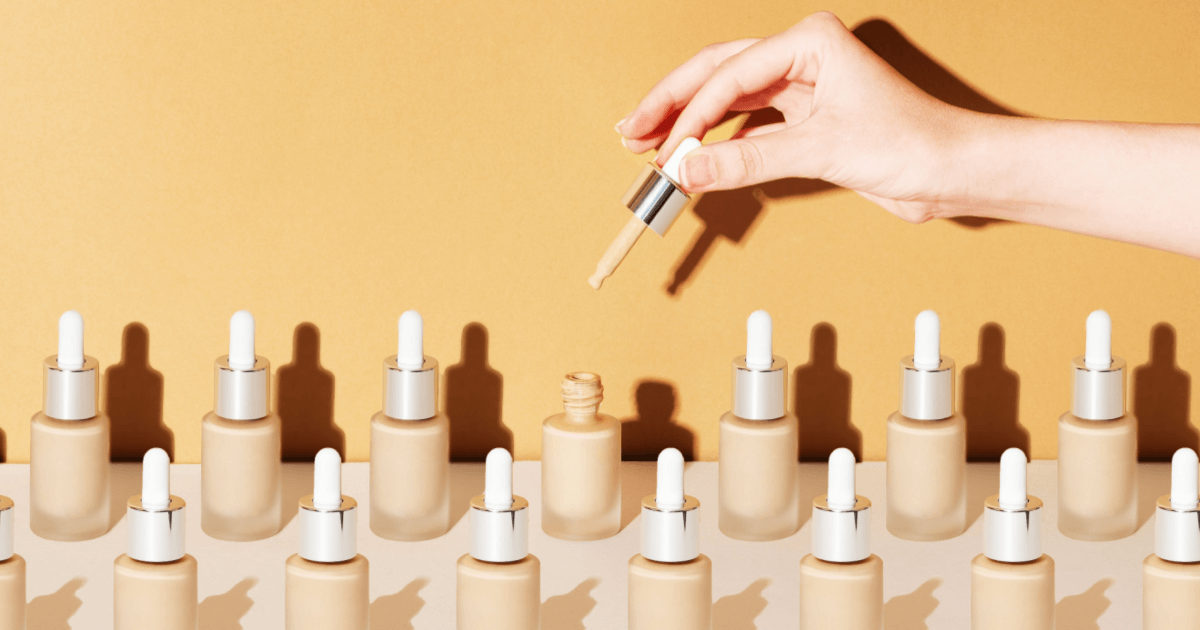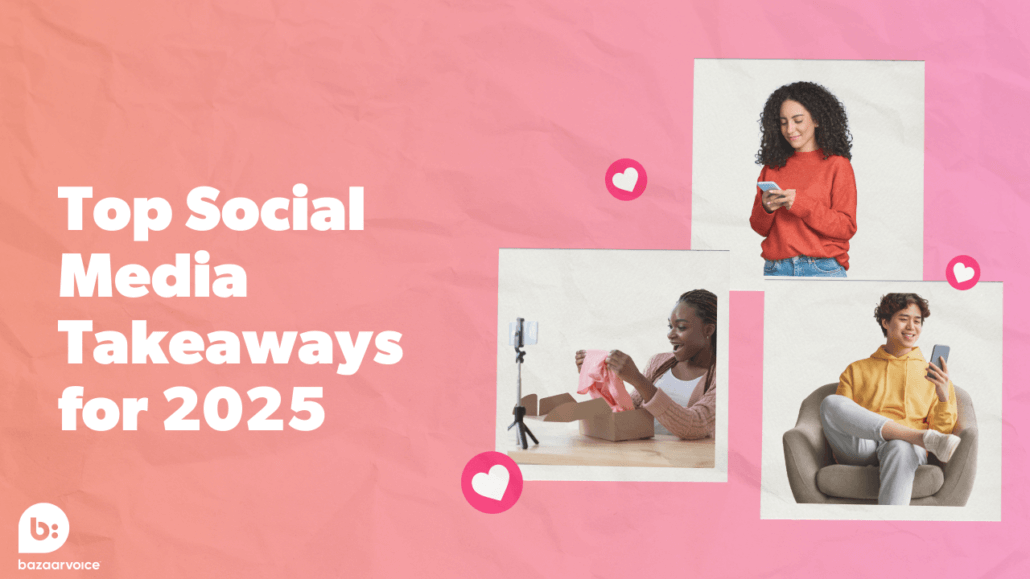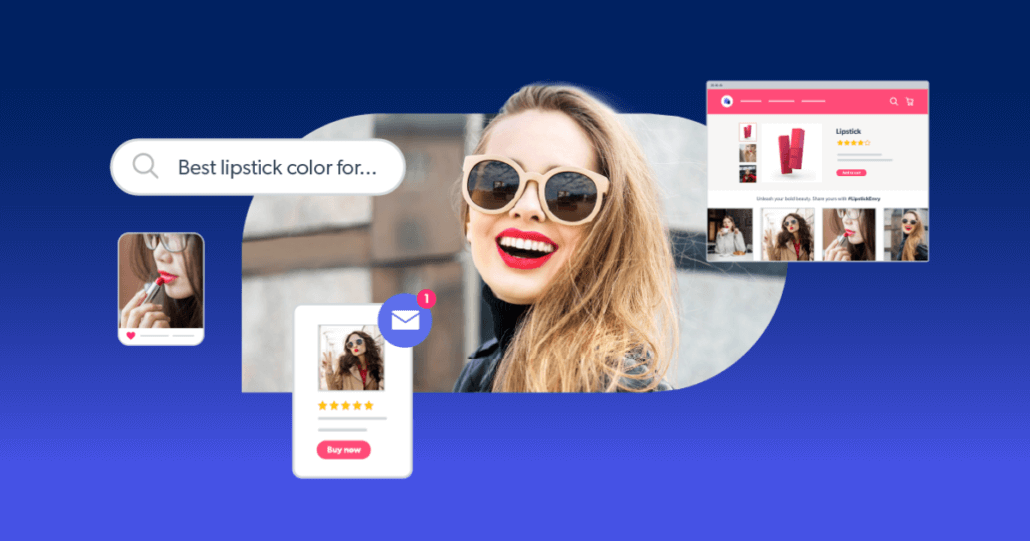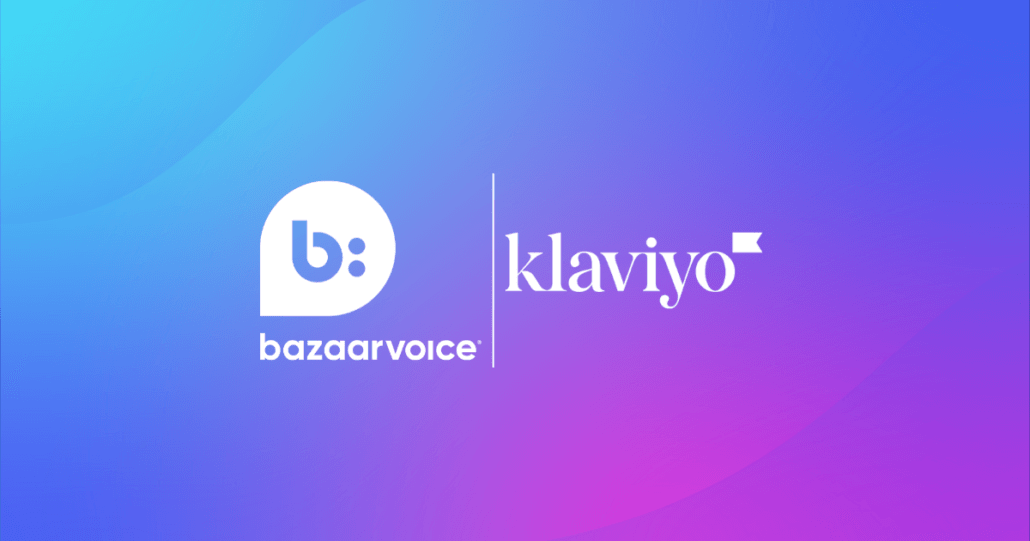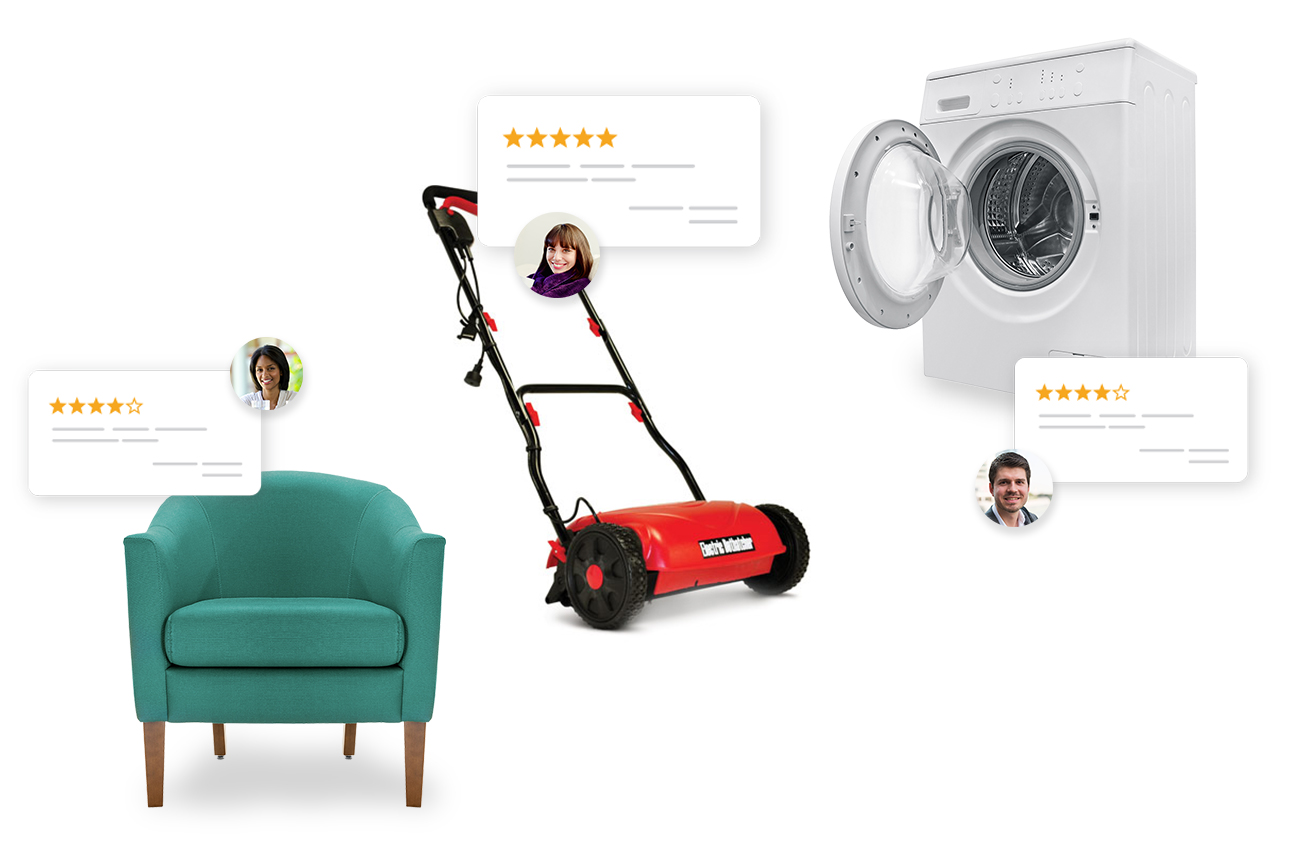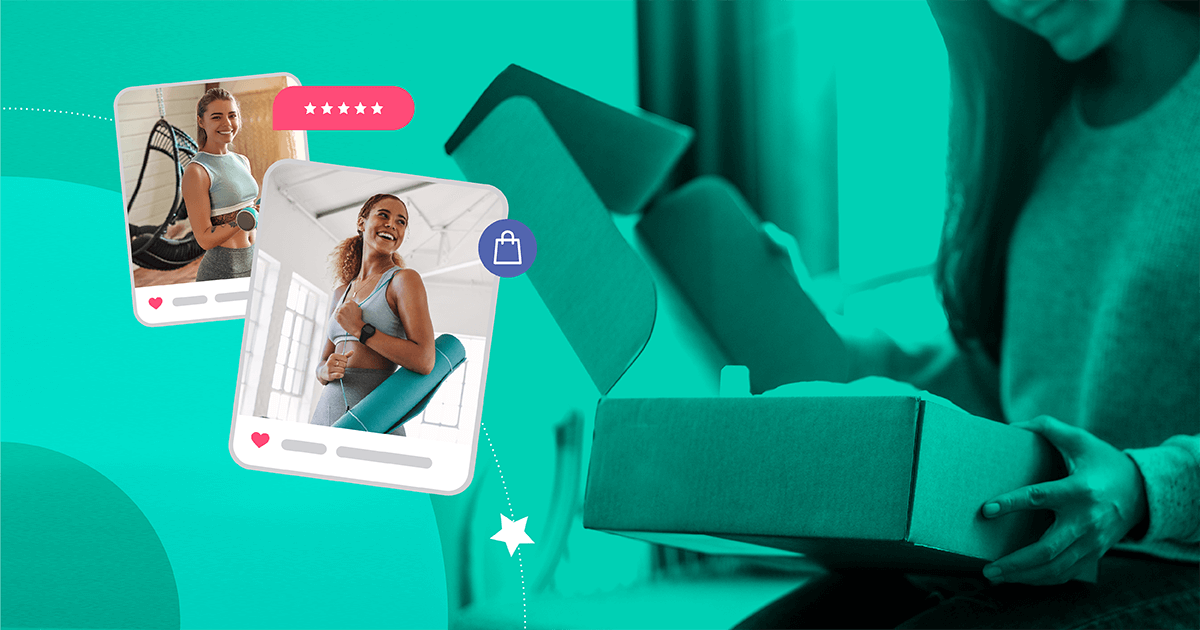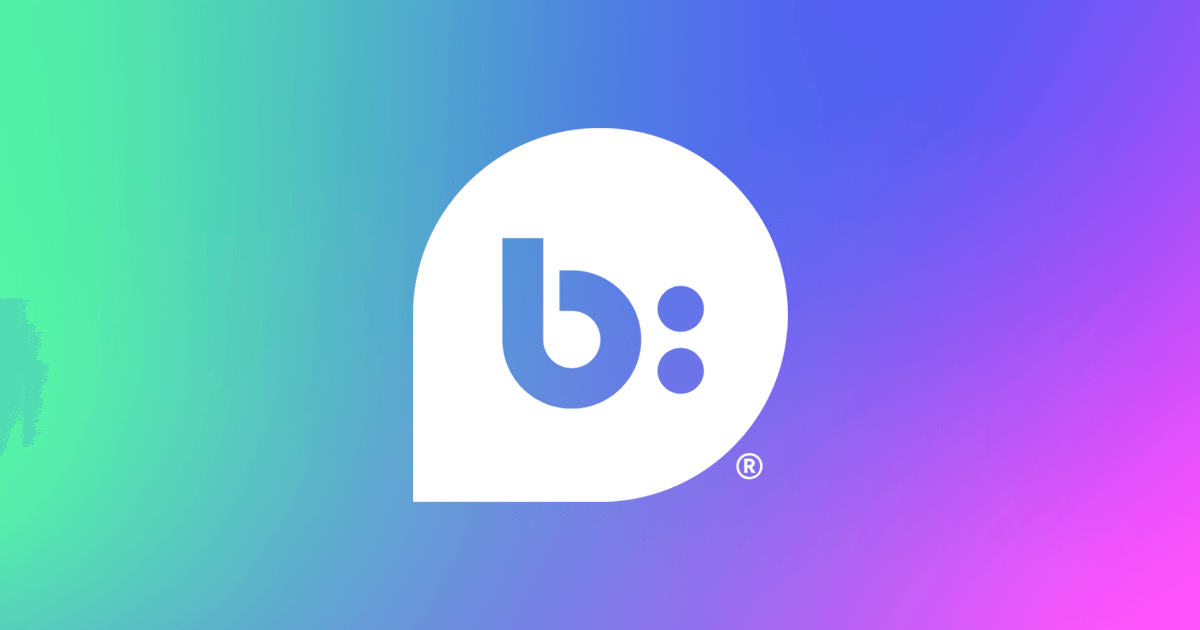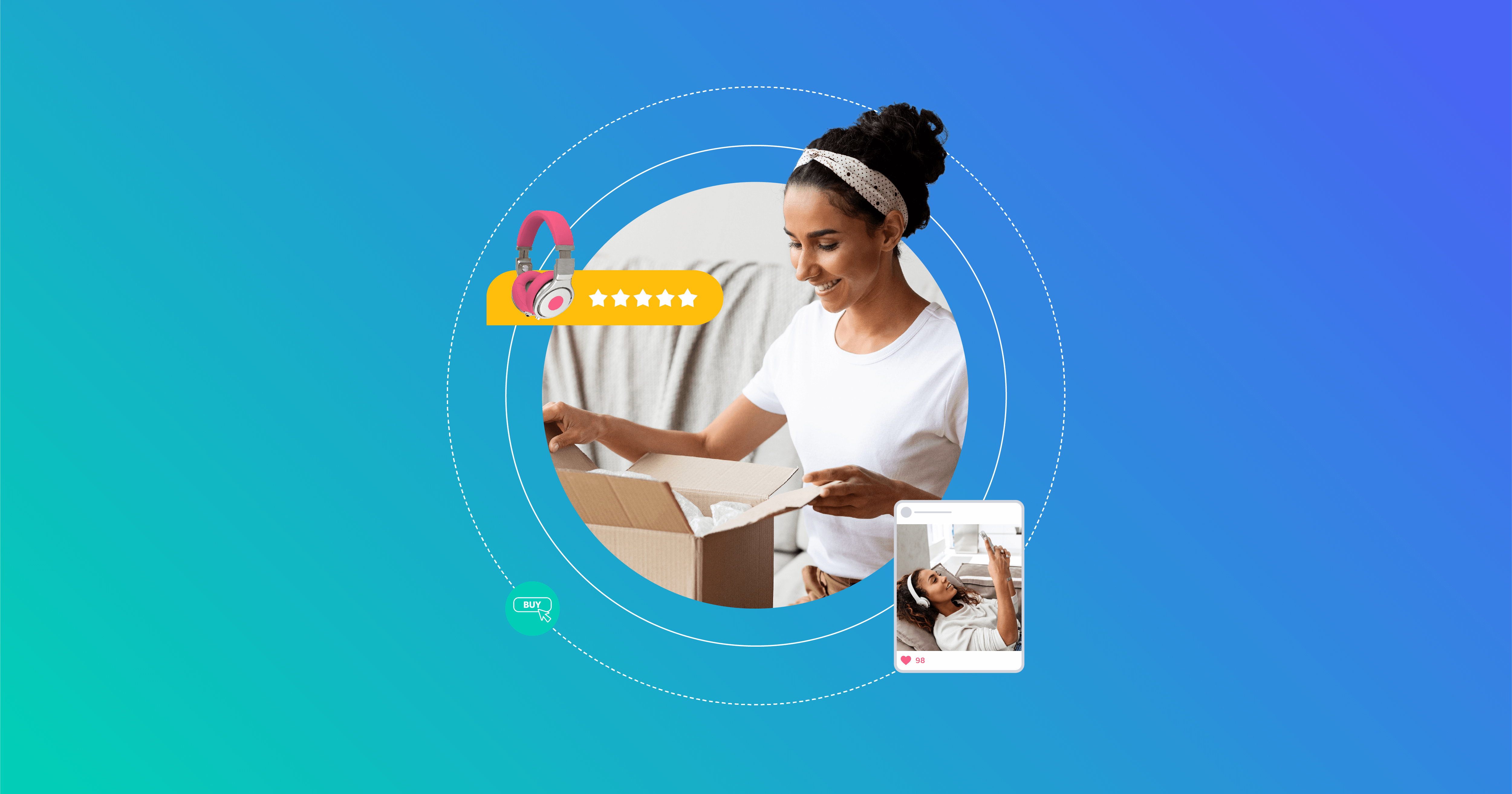March 15, 2024
To many, product sampling is literally just giving away free samples of your product. In the hopes that maybe the consumer will buy it later, subscribe, or become a loyalty member. But no — it’s so, so much more than that.
Picture this: You’re walking through the store, your stomach is growling, and you’re looking for the perfect thing to eat. Then, out of nowhere, a person shouts, “Free samples!” and hands you a hot bite of pizza just oozing with melted mozzarella cheese. And hey, it’s dinner time…you want more! *Add to cart.*
Now, replace that pizza with anything else — wine, ice cream, a handheld vacuum. Once customers try it, they’re more likely to talk about it, buy it, and share it. That’s why, despite the costs, product sampling marketing is one of the most effective ways of collecting authentic content and increasing conversions on your e-commerce site, social pages, and beyond.
Chapters:
- What is product sampling?
- When should you launch a product sampling campaign?
- Why you should launch a product sampling campaign
- Product sampling strategies
- Get started with product sampling
What is product sampling?
It’s the practice of offering goods or services to your audience in exchange for increased brand awareness, brand loyalty, reviews, feedback, and other revenue-boosting user-generated content (UGC). This is a form of experiential marketing because consumers are able to completely absorb and engage with the product prior to buying it.
Quick history lesson: Product sampling is a tried-and-true marketing strategy dating back to the 1850s. Benjamin T. Babbitt, a soap manufacturer, was one of the first people to hand out samples to his fan base. As time passed, the power of this marketing strategy was realized by others and has since become popular in a variety of industries.
Today, there’s several different product sampling methods:
- Traditional sampling means giving away free product samples to customers, so they will feel more confident buying the product
- Digital product sampling is a sustainable sampling method, where customers buy a product in a store or online with a provided coupon, or receive money back after uploading the receipt — no samples need to be shipped meaning no unnecessary packaging waste
- Sampler packs include small or trial-size products. If the customer likes the sample, they are more likely to buy the product at full size
- Mail drops are when you mail free samples directly to customers’ homes
- Limited time samples are free only for a specific amount of time, such as three days, a week, etc. This adds excitement and plays to the psychological fear of missing out (FOMO!)
- Virtual sampling is when consumers are able to try out a product online without visiting a store or receiving something in the mail. This type of product sampling campaign relies on technology like an app or artificial intelligence
When should you launch a product sampling campaign?
You should launch a product sampling campaign when you need to boost word of mouth or get feedback on a new product.
- You have a high-quality, effective product ready for people to test. It’s important to make sure you’re delivering something genuinely good before people’s opinions start flying. A bad product will be all the more maligned by product sampling
- Your budget can handle sampling costs. This includes the cost of the samples as well as shipping, handling, staffing, and marketing. Note: Digital product sampling alleviates a lot of fulfillment costs!
- You need increased brand awareness for an existing product. If your brand isn’t well-known but you have a great product, you need positive word of mouth to increase brand awareness and fill your sales funnel. Just make sure expansion is feasible for you based on your current business model
- You have a new product to launch. Product sampling will help with product development, as well as create some additional buzz. People who sample your product and love it are more likely to buy it, tell their friends, and even create shareable content about it
Why you should launch a product sampling campaign
Product sampling marketing helps brands boost feedback, conversion rates, positive reviews, and social content for both small and enterprise brands alike.
Get valuable product feedback
Product sampling is a way to connect with and get feedback from your audience.
According to Ryan Stewart, a marketing expert and the managing partner of WEBRIS, “We normally ask them questions about their experiences with our services, show how they use them, or even invite them to take part in an online contest that involves using our services.”
You can also use surveys to collect quantitative and qualitative data. This feedback can help you further develop the product into something your audience will love.
Boost sales and conversion rates
Sampling a product makes customers want to buy it. It’s wired into our psychology. Dan Ariely, a behavioral economist at Duke University, knows samples create desire. “If I gave you a tiny bit of chocolate,” he says, “all of a sudden it would remind you about the exact taste of chocolate and would increase your craving.”
Take Costco, for example. An oft-cited study about Costco revealed the grocery store saw a significant boost in revenue thanks to its free food samples. And Stewart confirms sampling is a solid way to increase sales. He asserts, “People who feel like we value their opinions are more likely to buy from us when they need something similar in the future.”
Gathering UGC and reviews from shoppers also gives brands a significant boost in sales. Absolution Cosmetics wanted to support product launches, build brand awareness around their healthy skin care messaging, and boost customer loyalty and engagement to ultimately increase sales. The brand implemented a dual review collection strategy, combining an evergreen sweepstakes on their website, ensuring a constant influx of fresh UGC and reviews, and targeted product sampling campaigns to support new product launches.
As a result, in just a six-month period, Absolution increased its revenue per visitor from 14% to 123%, customer engagement from 28% to 61%, and earned $107K directly attributed to ratings and reviews.
Encourage positive reviews due to a sense of reciprocity
Free samples encourage potential customers to play into the idea of reciprocity. In other words, people who receive the sample want to do something for your brand in return — like posting a positive review on social media.
This by no means every review is going to be positive of course. Neither should that be expected. Product sampling isn’t “we’ll send you a product sample in return for a positive review.” By contrast, reviews should be honest regardless of the sentiment. And even negative reviews provide added authenticity for your brand.
But one of the reasons sampling does yield such positive results is because the right provider (like Bazaarvoice 👀) can create campaigns for a hyper-targeted audience across demographics, behaviors, preferences, and more. When the recipient is the exact target audience the product is for, the review is much more likely to be positive. Just make sure your sampling provider can accommodate this.
“Product sampling allows us to get our audience involved in the creation of our content, which gives them a sense of ownership over what we’re sharing,” says Stewart.
For instance, after TTI Floor Care North America allowed top brand loyalists to sample Dirt Devil vacuum cleaners for free, they saw an 86% response rate and more than 700 reviews full of positive, authentic UGC. As a result, Dirt Devil product reviews went from 2.8 to 4.5 stars. These reviews not only filled TTI’s own webpage but were also syndicated on major retailers’ sites.
Supercharging brand awareness with social content
You probably already know that social content is an important way to reach consumers. Combining the reach of social media with the effectiveness of sampling gives you a unique marketing campaign powerhouse.
Most Bazaarvoice Sampling customers are brand managers who use sampling to generate and feature content on social media.
“Linking sampling to social is a core tenant of any e-commerce plan,” says Kerry Bridge, Global Director of Advocacy at Bazaarvoice. “You need to be able to collect that great content from social in order to populate your product pages. Plus build your community.”
We’ve pinpointed a few different reasons why social content and sampling go hand-in-hand:
- New product launches benefit greatly from large amounts of recent UGC. 89% of shoppers check reviews before making a purchase, and 60% of shoppers feel more comfortable making a purchase if they can see product images or videos first. A great way to collect this valuable UGC is to employ sampling
- Entering new markets helps you expand your reach. Each demographic is different, and over 70% of shoppers are looking for perspectives that reflect their own. Product sampling can help you get your foot in the door and provide UGC that speaks to these new markets in a relatable way
- Supporting your core SKUs with product sampling allows you to collect quality content at scale. Your core products are hot sellers for a reason — get them in your fans’ hands through a sampling campaign and encourage them to create content. Data from our Bazaarvoice Network of over 12,500 brands and retailers found a 135% increase in conversion rate and a 164% increase in revenue per visitor when shoppers engaged with social content from their peers
- Working with the right content creators can help you skyrocket your brand awareness and success. Creator collaborations add to your content volume, and by sharing with their own engaged audiences, they also extend your reach
Relaunch your products
There may be times when you want to shift your brand strategy and reformulate or reinvent your product. With the introduction of the FTC’s 2023 review hijacking legislation, reformulating your product isn’t just about tweaking its features — it’s about ushering it into the market as if it’s an entirely new line. It’s a unique challenge, with the daunting task of resetting your review count and content collection to zero. But sampling can help you rapidly rebuild from this new starting line.
- Relaunch your product with fresh advocacy: Successfully relaunch your reformulated product by targeting the right audience, providing an experience, driving UGC from day one, and gaining actionable insights from product samplers
- Combat misleading reviews with authentic content: If the reformulation means the product is “substantially different” in “one or more material attributes” from the prior version (as per the FTC), it would be deceptive to continue using existing reviews. A sampling campaign can generate fresh reviews and customer photos quickly and effectively so you have an arsenal of new social proof you can show off to shoppers
Product sampling strategies
Ultimately, all sampling campaigns help your potential customers get a preview of what you’re selling while helping you get more visibility for your product and brand overall. The individual strategies can take several different forms, from in-store food samples (Costco) or mailed glasses to try on (Warby Parker). The details depend on your business model and campaign goals.
Here’s seven examples from the masters that you can imitate when you craft your own campaign, including the relevant sampling program they used.
Costco nails the traditional sampling strategy
Costco is famous for the traditional, in-store, free sample method. People have gone so far as to tour the sample tables at various Costco stores. The more samples people try, the closer they get to a free lunch. Personal finance and food bloggers have picked up on this idea as well and have even written articles encouraging the practice.
Costco’s store sampling draws people to its stores, thanks to one key message: Going to Costco is fun (and yummy!)
While you might be nervous about handing out “freebies,” the benefits far outweigh the costs. In fact, according to the College Marketing Group, “Interactions — the company that handles Costco’s sampling — found that their efforts led to a 71% increase in sales of beer and a 600% increase in frozen pizza.”
Traditional sampling works especially well for supermarkets like Costco, as well as other brick-and-mortar stores like makeup counters. Just remember that the goal for this type of sampling is to increase sales and positive word of mouth. You probably won’t get a lot of usable content out of it.
L’Oréal gets personal with virtual sampling
Since its target market is focused primarily on beauty, personalization and creativity are everything for L’Oréal. That’s why L’Oréal’s special offers and promotions are tailored to this demographic’s specific preferences and needs in the form of virtual sampling.
Customers simply select a product like hair dye or blush. Once they grant L’Oréal access to their camera, a small window shows them what they would look like wearing that product. It’s kind of like Zoom + the Sherwin-Williams ColorSnap Visualizer. But instead of paint, it’s a beauty product.
Virtual sampling is attractive because it’s incredibly scalable, not to mention germ-free. Brands aren’t limited by physical space in stores or the cost of making or shipping the product. Instead, consumers are able to instantly get a good idea of what the product would be like for them without the hassle of applying the sample color to their wrist (eww), applying to a program, handing over their personal info, or potentially wasting a product if they don’t like it.
This technique is also sometimes more helpful and realistic than physical store samples because the tool takes into account different product combinations and how they affect each other. For example, if I dyed my hair bright red, would that red lipstick look good? Hmm… maybe a more subtle shade would be better.
Brands can use virtual try-ons to fill their social media calendars. If you have a tool like this, inspire your customers to post a photo of themselves on social media “trying on” your product. Then collect, store, and track that content using Bazaarvoice’s AI-powered Media Library.
Warby Parker masters the mail drop
Warby Parker prides itself on its choice selection when it comes to new, stylish, and comfortable eyeglass frames. It provides a quiz to help customers determine exactly what type of frames will best suit them and then a personalized selection based on their responses.
After completing the quiz, customers can choose up to five frames that are delivered right to their homes, where they can test them for five days. After finding that perfect pair, customers can buy what they want and ship the rest back. The return shipping is free with Warby Parker’s return label.
For something you have to wear all the time (like glasses), comfort and style are paramount. Warby Parker helps customers feel assured that both needs will be met because customers can literally see the results for themselves at home before buying.
For brands that want a turnkey sampler program, Bazaarvoice offers a white-labeled sampling program to help retailers get their product samples directly into the hands of their community and start generating UGC.
Neuro optimizes product development
Sampling isn’t just to market and sell existing products. Kent Yoshimura and Ryan Chen, co-founders of wellness company Neuro, explain in this podcast one of the key ways they achieved their success: making sure Neuro Gum was as perfect as possible before they jumped into product activation. They gave out free samples of the gum to family, friends, and co-workers to test a variety of key details such as:
- Different ingredients (20 milligrams of caffeine to 80 milligrams of caffeine)
- New flavors
- Different sweeteners
- Hard chews vs. soft chews
After perfecting the product, Yoshimura and Chen surpassed their crowdfunding goal in just three days and ended up selling over 12 million pieces of Neuro Gum. And those people who sample the product became loyal customers.
“Once we introduce that product to somebody, the repeat purchase rate can be up to about 40, 45%,” said Chen. “Our challenge is getting people to try the product. Sampling is a really big opportunity for us.”
Neuro ensured it had a good, high-quality product and an active community of fans, thanks to product sampling. According to Chen, “We’ve grown such a loyal group of customers that they give us feedback all the time. It’s built a community which has been inspiring for us and has given us the motivation to keep going.”
After their initial success, they continued sampling with specific cohorts like the CrossFit community. They’ve also shipped product samples to new distributors to explore a potential new market in Africa.
Using samples and collecting customer responses is the most effective way to get meaningful feedback about your product, so you can improve it and launch with confidence.
Bazaarvoice’s sampling programs can help you learn from sampler feedback and expand into new markets via our robust, global Influenster community.
Home Depot doubles conversion rates with Managed Sampling
Home Depot Canada wanted to increase the volume of UGC, particularly reviews, its brands get on its product pages. So they partnered with bazaarvoice to create the Home Depot Seeds Sampling program.
“UGC is becoming increasingly important. It’s no longer a ‘nice to have.’ It’s a necessity. We see our site as a research tool, so even if people come into the store, they still use their phones to see ratings and reviews and make a final decision.”
Gabriela da Silva, Senior Brand Advocate Analyst, Home Depot Canada
Seeds Sampling is a review-seeding program that puts a brand’s highest priority products into the hands of its shoppers, in exchange for honest reviews on HomeDepot.ca. Since the program’s inception, it’s already led to some brands doubling their conversion rates on HomeDepot.ca.
It’s not just legacy products either. WiZ, a brand featured on HomeDepot.ca, used Seeds Sampling to generate buzz for new products and earn that UGC before they’d even launched.
It worked, too. The conversion rate for the products used in Seeds Sampling was 68% higher than products not part of the program. Not bad at all.
Home Depot isn’t the first retailer to turn to Bazaarvoice for a Managed Sampling program. We’ve built sampling programs for Walmart, Target, and Sam’sClub, to name a few. And you could be next.
Get started with product sampling
Ready to experience the power of product sampling marketing in your own business? Bazaarvoice makes it easier than ever to get your products into the hands of the perfect customers, leading to a surge in reviews, social media buzz, authentic word-of-mouth, and sales.
You can learn more about Bazaarvoice Sampling here, or get started directly below.
Get started